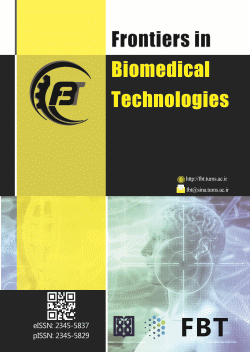Performance Evaluation of Bone Mineral Densitometry Techniques by a Novel Phantom
Abstract
Purpose: Accurate performance assessment of bone mineral density (BMD) methods is crucial due to the fact that a high level of exact estimation of bone situation is needed for correct diagnosis. Variation of parameters like sensitivity and error ratio highly affects the densitometry results that may induce some level of uncertainty in diagnosis. So, designing an algorithm for correction is necessary to assure examiners about measurement results.
Methods: In this study several phantoms consisting of soft tissue- and bone-equivalent materials were devised to accurately test bone densitometry systems. To the best of our knowledge there is no unique phantom to be able to use for evaluation of both Dual Energy X-ray Absorptiometry (DEXA) and Quantitative Computed Tomography (QCT)
in a wide range of density. The main motivation of this study was to design a reliable and easy to use phantom. A QCT quality control, quality assurance, and Plexiglas cylindrical phantoms as a spine phantom were designed and constructed to assess different bone densities. Four inserts in spine phantom with precisely wide range of K2HPO4 solutions
were used for simulation of bone tissues and to determine the BMD systems characteristics. The designed phantoms were also used for performance assessment of BMD systems. We used a sinogram-based analytical CT simulator to model the complete chain of CT data acquisition for QCT method as well.
Results: In this research it is demonstrated that by decreasing of bone mineral densities an increasing trend in error ratio of measured densities and declining trend in methods sensitivities were observed in the both DEXA and QCT methods, that may cause some level of uncertainty in low densities. It has been shown that between the ranges of 20 and 100 mg/cc K2HPO4 concentrations, the error ratio in both DEXA and QCT techniques is
more than 20%. Sensitivity values in incremental mineral contents ranges between 20- 60 mg/cm 3 and 260-300 mg/cm 3 reveal an upward trend between 0.93 and 1.45 for QCT and from 0.59 to 1.44 for DEXA, respectively.
Conclusion: A novel phantom was designed with capability of easily supporting wide range of densities and using in both DEXA and QCT techniques to measure and compare the sensitivity and error of systems. Our phantom showed excellent capability for accurate determination of BMD, particularly in low density bones. In this study it is demonstrated
that the sensitivity and error ratio is affected by bone density that may cause uncertain results especially in low densities.
| Files | ||
| Issue | Vol 1 No 4 (2014) | |
| Section | Original Article(s) | |
| Keywords | ||
| QCT Phantom Quantitative Computed Tomography DEXA Bone Mineral Density. | ||
| Rights and permissions | |

|
This work is licensed under a Creative Commons Attribution-NonCommercial 4.0 International License. |




